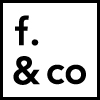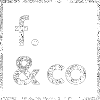–
Printing in blue. The past is the future.
There are innumerable stories in which a long gone reality casts its shadow on contemporary expressions and processes, yielding cases sometimes flirting with absurdity. The detailed technical drawings used in engineering and architecture, "blueprints", are blue by convention. Historically, blueprints were nothing but the reproduction of drawings that were initially done on tracing paper or cloth. The original would then be placed on "blueprinting" paper, an ammonium-coated sheet which, under lasting exposure to light, would turn blue. This would reveal the drawn parts of the original in white on a blue background, and gave the entire process – product, process, paper – a label based on a coincidental chemical attribute.
The famous historian and MIT professor Elting Morison wrote a story that largely goes in the same direction. Quoted most recently in one of Geoffrey Hodgson's numerous articles, the narrative goes as follows:
A time-and-motion expert was studying film footage of Second World War motorized artillery crews. He was puzzled by a recurring three-second pause just before the guns were fired. An old soldier also watching the film suddenly realized that the three-second pause had originated from the earlier era in which the guns were drawn by horses, and the horses had to be held and calmed in the seconds just before the guns went off. Despite its eventual redundancy, this part of the routine had survived the transition from horse-driven to motorized artillery.
The trace that we leave is often not the one we'd expect. The rhythm that we are imposing onto our connected lives sometimes leaves us with little time to be the producers of valuable blueprints for the long run. In businesses and academia, reports are written, sent, but left unread, unused, uninspiring, and are thus not valued much above zero. They are, in a way, the sketches of unwritten syntheses, the thoughts that do not become. To paraphrase Nietzsche, we have this collective tendency to “become who we were,” rather than “who we are”. Indeed, we often prefer to mechanically repeat the habits that have proved successful in the past, either for us or the people who preceded us, than to “fight” resistance and aim for innovation. No wonder, then, that “laws” such have that of diminishing marginal returns have proved right over and over again despite their nonsensical, deterministic implications.
Yet, when questioned individually, we firmly deny the unescapable consequences of the second law of thermodynamics. We deny that we will all, eventually, blend in a formless blob of even, isothermal consistency, each and every one of us undistinguishable from the others. If our world is only to become more disorganized, how are we to retain what makes humankind such a different animal? What is it that makes us accept, socially, pessimistic laws that we strongly reject on an individual level? As it happens, entropy – the level of “available” energy around us – seems to be on the rise. From the point of view of physics, it all makes sense. As we tear down the walls that used to surround our societies and irremediably take down the barriers to trade and socialization, we become, somehow, more and more undifferentiated. The pressure thus rises infinitely on our tattered centuries-old habits. Some things remain and leave a trace, others disappear and fall into oblivion.
In this regard, the fact that some of the intermediary artefacts that we produce may or may not end up constituting the basis for higher purposes is dependent on a number of factors, not the least of which are talent and creativity. The comparison between prime architects is, in this regard, highly revealing. While the sketches of the artistic Frank Gehry are sold for thousands of dollars, or featured in exhibitions in celebrated museums like New York's Guggenheim, other famed architects like Jean Nouvel remain completely excluded from this sub-market. The intermediary products of their work are not being circulated. They are, it is said, not conducive to aesthetic interpretation.
Nevertheless, this doesn't mean that the ultimate outcome of creative processes involving a series of intermediated artefacts are necessarily dependent on their being marketable products at every stage. The examination of the successive elements in a series reveals the progressive improvements that are ultimately turned into the semi-finished "solid state" of creation which, in the specific case of architecture and engineering design, takes the form of the blueprint. While some may see the blueprint as an obviously "finished" product, this is, in practice, often not the case. In the interior design of fashion outlets, for instance, the pace at which the industry evolves requires that blueprints be incessantly modified (and modifiable) which, in this specific case, puts the architect in a most conservative position – something that the literature on "creative industries" often does not consider as a possibility. In this model, the "liquid" and moving shapes are quintessential and leave no room for the inherently traditional functions that these trades fulfil. We claim everything for creativity while forgetting that the bases on which these activities rely are dependent on a great deal of uncreative activity, sometimes encompassing entire organizations, entire pans of industries. The blueprint, the trace, the past experiences of rational nature, are comforting, and necessary. Tradition feeds innovation, as it sets the cognitive environment on which we may articulate further concepts. It is reassuring. As Keith Pavitt, the English sociologist, once put it, it allows planes to fly ; a question which, if planes were build by sociologists, would probably not be a given.


